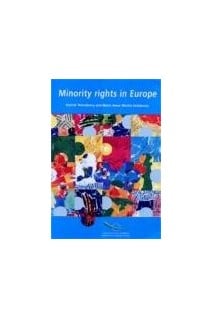



This book presents an account and an evaluation of the principal standards and mechanisms created by the Council of Europe and other international organisations to protect minorities. The critical standpoint centres on the nature and scale of the challenge presented to the Organisation by the "ethnic question." The work examines in particular some of the Council of Europe's main legal instruments: the European convention on Human Rights, the Framework convention for the Protection of National Minorities and the European Charter for Regional or Minority Languages.Monitoring activities in various member and non-member states are reviewed, both prior to their accession to membership to the Council of Europe and in their post-accession phase. The special case of the Roma, a minority without a "kin state" is examined in detail.This work will be of interest to academics, governments, non-governmental organisations involved with minorities, students and all those who see the importance of protecting the rights of minority groups as a step towards permanent greater stability in Europe.
Errata
p. 43, line 20, replace The Court also observed that mention [...] existence of groups by The Court referred to the contention of the applicants that mention of "the consciousness of belonging to a minority and the preservation and development of a minority's culture" could not be said to constitute a threat to "democratic society",[1] and that "the existence of minorities and different cultures in a country was a historical fact that a `democratic society' had to tolerate and even protect and support according to the principles of international law".[2] Acceptance of such a view would have brought the ECHR closer to legal texts which mandate positive action to promote minority identity and are more explicit in the case of groups.
p. 637, line 14, delete consequent
Download an extract (1000)

This book presents an account and an evaluation of the principal standards and mechanisms created by the Council of Europe and other international organisations to protect minorities. The critical standpoint centres on the nature and scale of the challenge presented to the Organisation by the "ethnic question." The work examines in particular some of the Council of Europe's main legal instruments: the European convention on Human Rights, the Framework convention for the Protection of National Minorities and the European Charter for Regional or Minority Languages.Monitoring activities in various member and non-member states are reviewed, both prior to their accession to membership to the Council of Europe and in their post-accession phase. The special case of the Roma, a minority without a "kin state" is examined in detail.This work will be of interest to academics, governments, non-governmental organisations involved with minorities, students and all those who see the importance of protecting the rights of minority groups as a step towards permanent greater stability in Europe.
Please note that in accordance with our terms & conditions, PDF/epubs may only be purchased by private individuals.
